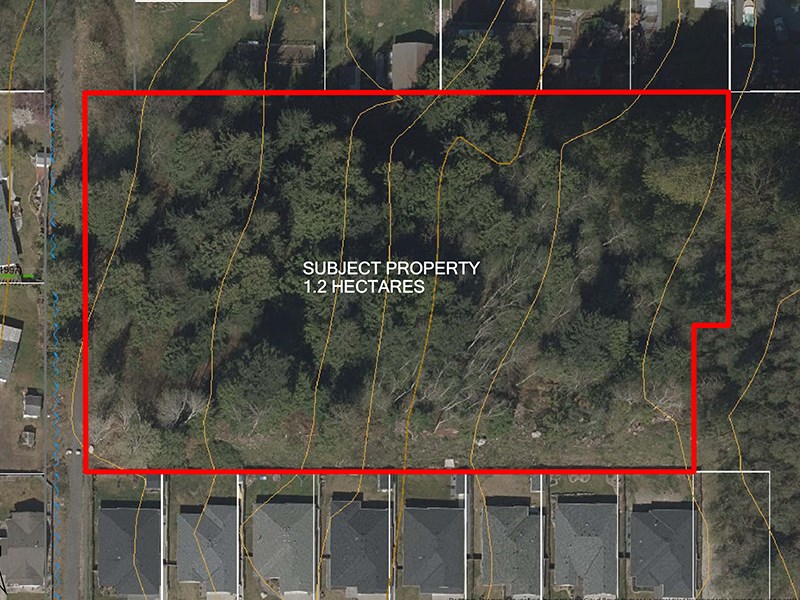Powell River’s tree-protection bylaw has become a matter of controversy, made clear by separate presentations brought before the two most recent City of Powell River committee of the whole meetings.
On Tuesday, July 4, a delegation from 3C1B Developments made application for a variance permit that would allow it to remove 100 per cent of the trees on its new Westview subdivision near Field Street and Bowness Avenue.
At the prior committee meeting, on June 13, Townsite resident Patricia Barnsley said the city’s tree-protection bylaw does not go far enough to save significant trees, such as Ontario maples and Dogwood.
But, according to 3C1B director and local developer Darren Edwards, the bylaw goes too far and is anti-development.
Powell River’s tree-protection bylaw was written in 2008 to enforce a retention of 80 per cent of trees on any lot within city limits greater than one hectare, or 2.47 acres. 3C1B’s proposed subdivision property of 16 single-family units falls under that clause. The existing bylaw only allows for 20 per cent of the trees on the lot be removed.
City senior planner Jason Gow recommended a compromise where a new tree-protection bylaw would be written and a variance of an 80 per cent cut approved for 3C1B’s project, but not the 100 per cent cut the developers were seeking. Council will consider Gow’s recommendation on Thursday, July 20.
According to councillor Russell Brewer, 3C1B’s presentation to committee of the whole was confrontational at times.
“There’s always room to meet in the middle to find some sort of compromise, but to come out swinging and aggressive, almost spoken at rather than spoken with, is not helpful for trying to find some kind of compromise,” said Brewer.
Brewer added that he thought the developers have a valid concern and council will hear the motion for the variance, as well as a request from city staff for a clear direction on writing a new tree-protection bylaw.
Gow said the existing bylaw is outdated and unfair. Edwards said it was ridiculous and handcuffed development. Brewer said it was confusing from the start and that it is evident a new one needs to be written.
Developing and writing a new tree-protection bylaw will take a year or more and, meanwhile, construction of 3C1B’s subdivision is being held up during the most productive time to build.
“When it starts to cost money is when we’re into inclement weather and we have delays and we can’t put in infrastructure,” said Edwards. “This is prime time. This is when we need to be developing and bringing these lots to completion so we can bring them to the market.”
Gow said city staff’s initial recommendation to the company’s request for an exemption to clearcut the lot was to amend the out-of-date bylaw for variance and look at developing a new bylaw, both of which will take time.
“I must admit I didn’t think that was going to be the ideal situation because I know the development community doesn’t want to be held up,” said Gow. “I’m aware of that so I put forward an alternative recommendation.”
The second option Gow recommended, which the committee unanimously decided to move forward to council, was a relaxation of the retention requirements for the 3C1B development from 80 per cent of trees left to 20 per cent, a compromise that Brewer said is fair, but 3C1B does not.
“There’s a place for trees and parks and greenbelts, but not in the middle of a residential subdivision,” said Edwards. “Take a look at where people have left great big trees in their yards and what they do to the homes, how they deteriorate siding and roofs. Now they’re stuck with a great big stump in their front yard that they put a potted plant on top of.”
Edwards said if the city requires the development to leave 20 per cent of the trees he will make sure the responsibility is on the city for any damage to housing units.
“Should anything come of these trees that the city has mandated we leave, if anything should come of any damage to perimeter drains, roofs, gutters, anything like that,” said Edwards, “we’ll let the insurance companies know the city required those trees to stand.”



